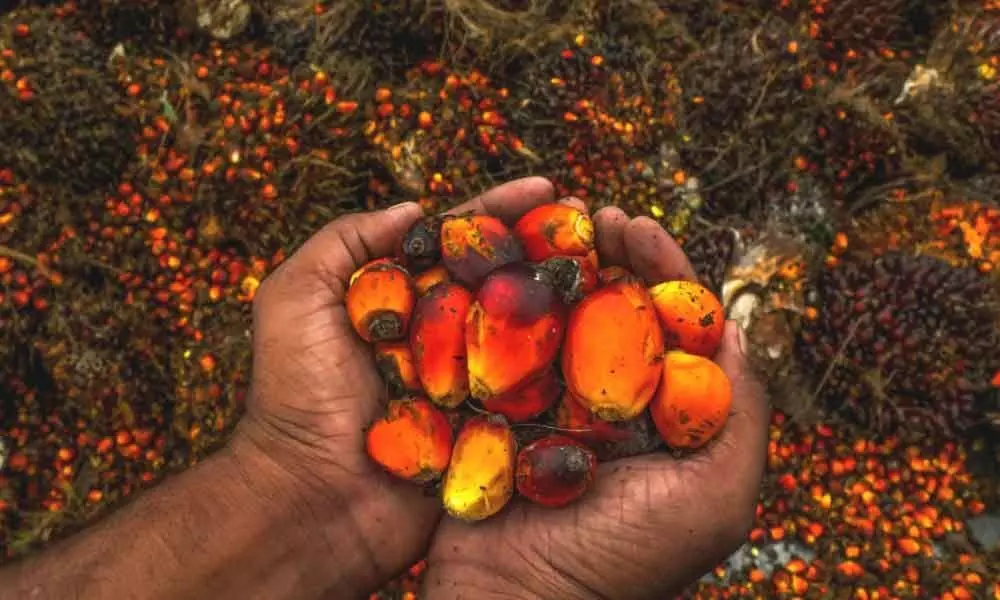Live
- Human-made calamity in Delhi
- Harvesting Hope In Deserts
- India Bloc On A Shaky Ground
- Centre to celebrate Veer Bal Diwas nationwide
- CM for clear strategy to ensure Southern states get their due
- SCR cancels Sabarimala special trains citing low occupancy
- Vizianagaram: Youth fly drones to highlight bad road
- Vijayawada: Inter-district offender nabbed, Rs 26 lakh loot seized
- Congress cancels all programmes for 7 days in honour of Dr. Manmohan Singh
- Nara Lokesh Pays Tribute to Manmohan Singh, says he is a visionary leader
Just In
How palm oil plantation contributes to global warming decoded


Preparing land for palm oil plantations, and the growth of young plants causes significant damage to the environment, emitting double the amount of greenhouse gases than mature oil palms, according to a study.
Preparing land for palm oil plantations, and the growth of young plants causes significant damage to the environment, emitting double the amount of greenhouse gases than mature oil palms, according to a study.
The research, published in the journal Nature Communications, is the first to examine the three main greenhouse gas emissions across the different age stages of palm oil plantations.
It was carried out in the North Selangor peat swamp forest in Malaysia by plant scientists from the University of Nottingham in the UK. Palm oil is the most consumed and widely traded vegetable oil in the world, the researchers said. Global demand has more than tripled in the last eighteen years, from around 20 million tonnes in 2000 to over 70 million in 2018, and Malaysia is the world's second largest producer, they said.
The researchers analysed five sites at four different stages of land use: secondary forest, recently drained but uncleared forest, cleared and recently planted young oil palm plantation, and mature oil palm plantation. Laboratory analysis of soil and gas from these sites showed that the greatest fluxes of CO2 occurred during the drainage and young oil palm stages with 50 per cent more greenhouse gas emissions than the mature oil palms. These emissions also account for almost a quarter of the total greenhouse emissions for the region, the researchers said. Tropical peat swamp forests hold around 20 per cent of global peatland carbon. However, the contribution of peat swamp forests to carbon storage is currently under threat from large-scale expansion of drainage-based agriculture including oil palm, and pulp wood production on peatlands. Draining peatlands increases the oxygen levels in the soil, which in turn increases the rate of decomposition of organic material, resulting in high CO2 emissions from the drained peatlands.
In addition to CO2, peatlands also emit the powerful greenhouse gases such as methane and Nitrooxyperoxy nitrate. "Tropical peat swamps have historically been avoided by palm oil growers due to the amount of preparation and drainage the land needs, but as land becomes more scarce there has been an increased demand to convert sites, and the periphery of North Selangor is being heavily encroached upon by palm oil plantations," said Sofie Sjogersten from the University of Nottingham.

© 2024 Hyderabad Media House Limited/The Hans India. All rights reserved. Powered by hocalwire.com






